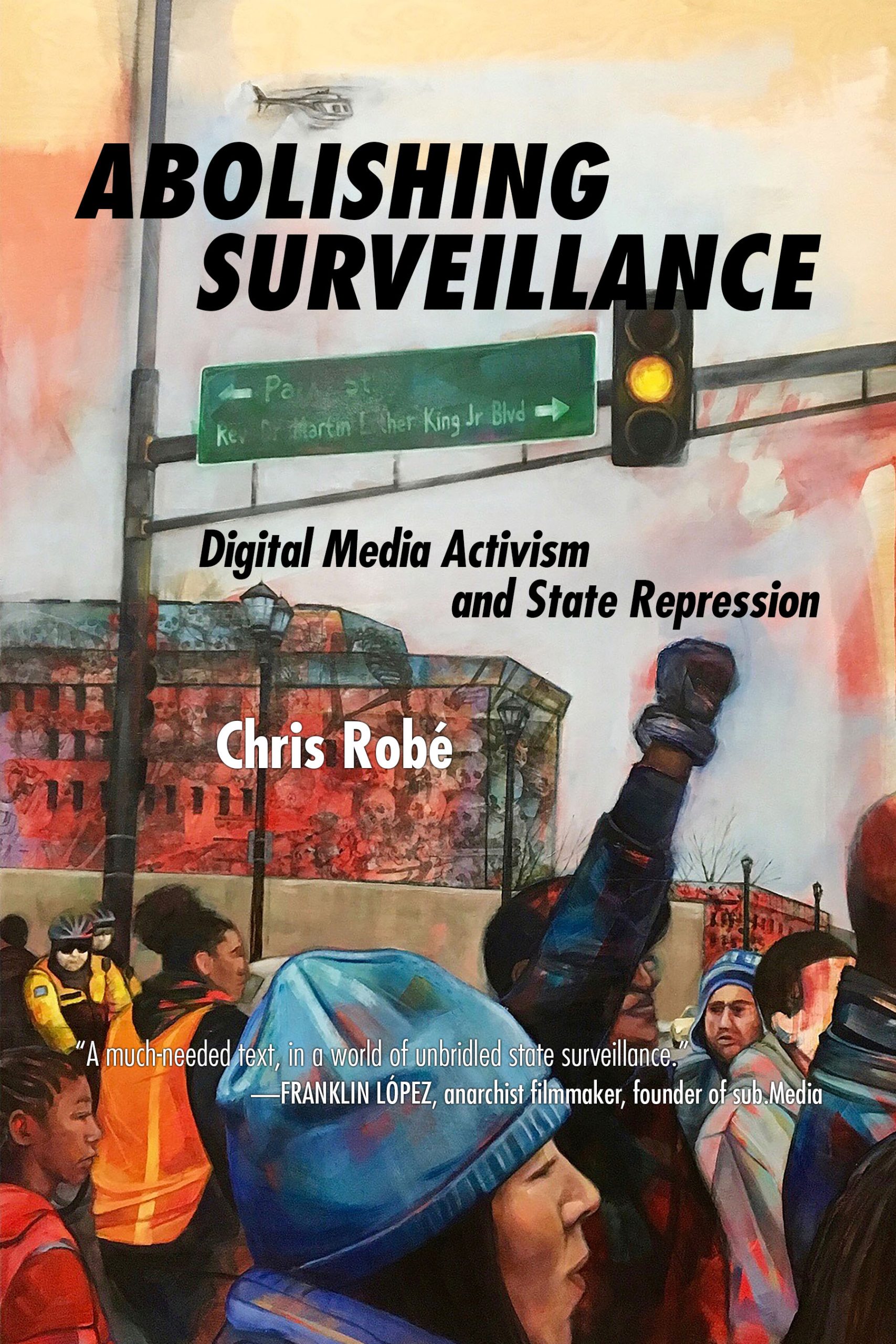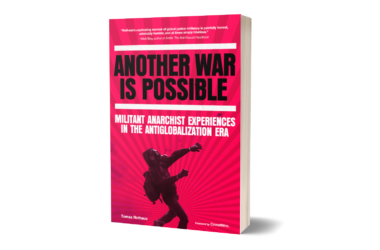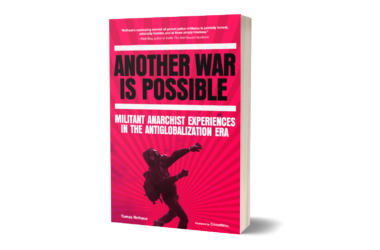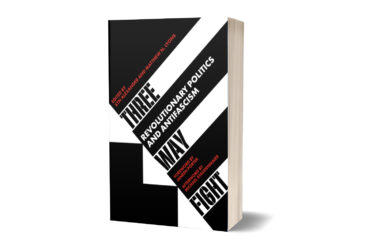An excerpt from Abolishing Surveillance: Digital Media Activism and State Repression
Public Seminar
October 11th, 2023
Sunset Park is a little more than half a square mile, located on the south-west side of Brooklyn and is most readily accessible by the D train from lower Manhattan. In the 1980s and 1990s it was consumed by the crack epidemic like many working-class communities of color in the city at the time. Gang activity was rife. When I was walking home one night with someone who grew up in the area, he pointed down a side street to mark the location where he was shot as a teenager in the 80s. The police generally avoided the area.
However, with rising gentrification, as upscale white residents have gradually infiltrated the area, police presence has increased. The price for an average townhouse has shot up from $746,000 in 2013 to $948,000 in 2015. Yet wages have stagnated, with the median income in the area remaining $48,000 from 2000 to 2014. Although average rent has only increased $300 in the same time frame, incomes remain stagnant and depressed. As a result, the rent burden—where families pay more than 30 percent of their income—has increased from 27.5 percent to 38.2 percent. El Grito’s video activism is part of a long line of media activist efforts that labored on the front lines against exploitation, racial stereotyping, and state violence. Film historian and activist Chon A. Noriega has chronicled the extensive media activism that emerged out of the Chicano/a movement during the 1960s and 1970s. A vibrant Chicano/a public community television and experimental and documentary cinema resulted.
For example, the public television show Realidades first aired in 1972 when members of the Puerto Rican Education and Action Media Council occupied the studios of WNET during a pledge drive. Realidades, along with shows like Acción Chicano and Ahora!, presented issues important to Chicano/a communi-ties like immigration, fair wages, and housing and brought broader Latinx cultural traditions that included poetry, theater, music, and film in a weekly format into people’s homes.
Additionally, Third Cinema, an anticolonial cinema movement from Latin America, the Caribbean, and Africa throughout the 1960s and 1970s, played a vital role in revitalizing radical film traditions in the United States. New York Newsreel aligned itself with Third Cinema’s perspective and served as the major distributor of their anti-colonial films throughout the 1960s and 1970s.
Newsreel also teamed up with residents of various Puerto Rican communities in New York to produce an outstanding documentary on the Young Lords, El Pueblo se Levanta (1971), and another film about the struggle over affordable housing, Rompiendo Puertas (1970). Chicano film-makers were openly supported by New Latin American Cinema directors in a declaration they made in Havana, Cuba, in 1978, and in turn, various Chicano filmmakers openly championed Third Cinema aesthetics and practices in their manifestos during the 1970s.
Although groups like El Grito might not be fully aware of these traditions, earlier practices and attitudes nonetheless filter down into their media making. For example, documentary has consistently served an important role among Latinx filmmakers due to its relatively affordable nature and ability to relate pressing political concerns to viewers in a timely manner. Additionally, El Grito’s media activism is similarly influenced by the Chicano/a Arts Movement that valued resistance against oppression, maintenance and affirmation of community values and cultural traditions as well as negotiating complex interactions with the dominant culture.
These elements can be seen throughout the diversity of El Grito’s videos that resist dispossession by gentrifiers, politicians, and the police, celebrate various Hispanic musical and spoken word cultural traditions, and employ commercially produced digital technology to counter the commodification of their neighborhood by developers, and offer alternative visions of Puerto Rican life that normally remain off screen or stereotyped by commercial media.
For example, one of El Grito’s videos addresses their support for the Sunset Park Rent Strikers. El Grito teamed up with Occupy Sunset Park to assist the rent strikers in 2012. Three buildings on 46th Street in Sunset Park had been in extreme states of disrepair, contaminated with asbestos, rats, and mold, lacking heat in the winter, and with basements overflowing with garbage. The tenants went on rent strike in response. El Grito assisted by strategizing and producing a multimedia campaign. Claudio Gaete-Tapia recalls, “We brought some cameras in and pushed the envelope and got people engaged in their own fight. You know, Dennis started filming and bringing attention, and then they reacted, and we drew attention to who was behind it.”
Because Flores and Del Aguila had vast experience with organizing, they assisted the rent strikers in strategizing. Gaete-Tapia, who is an urban planner, helped the tenants navigate the city bureaucracy. El Grito helped publicize the strike by engaging with the local news, creating an art exhibit featuring photos of the neglected buildings and rundown apartments, and establishing a Facebook page.
The art exhibit provides a particularly interesting example of how media making served as a nexus that fused art and politics for coalition building and community engagement. Bedford-Stuyvesant photographer Noelle Théard purchased 50 disposable cameras through a grant he received. After a brief training in image composition, Théard and Flores distributed the cameras to the tenants to document their deplorable living conditions. The visual testimony played an important part in tenants reclaiming a sense of agency. Although some of the tenants were reluctant to display their decrepit living conditions to all, they ultimately saw value in the project.
Alex Beatrice, a 38-year-old resident asserted, “This makes me feel like I’m being heard.” The photos were then displayed in an art exhibit during a neighborhood festival that drew together artists, musicians, and various community organizing groups. The festival emerged because its organizers were tired of seeing the art and music of communities of color exploited by corporations while those very communities that produced such works continued to be marginalized. In between DJs and dancing, groups like the Bronx Defenders held a “know your rights training,” the Committee Against Anti-Asian Violence (or CAAV: Organizing Asian Communities) provided information regarding tenants’ rights, and the rent strikers discussed the living conditions that prompted their art exhibit.
Because of its location within a festival, the art exhibit represented a dynamic intervention that not only validated tenants’ concerns but also brought them into dialogue with a cross section of other organizations where their struggles against policing, delinquent landlords, and racism converged and complemented one another. Furthermore, the festival became a reclamation of space by the community against those who only saw it as something to be bought and sold. The festival celebrated the community’s vibrant use of its neighborhood to display its diverse interests and talents where art and politics intertwined and flourished.
The Facebook page created a space where videos, pictures, news coverage, and activist events converged. For example, an October 31, 2014, entry documenting the Little A buses presented nine photos that document the substandard living conditions of the buildings and apartments. The caption beneath them reads: “What if you didn’t have to leave home to find a scary house on Halloween? Tenants have been living in a house of horrors caused by devilish landlords, ghostly speculators, evil spells cast by unscrupulous lenders and hobgoblins looking to gobble up their homes.”
Afterward, it lists the organizations forming a coalition around the strike. Finally, it announces a protest occurring the same day at the buildings at 3:30 p.m. As Tina Askanius has shown, social media can extend struggles from the street into cyberspace. Although it is possible to overestimate the potential of social media, these platforms can nevertheless serve as forums where information can be found, solidarity can be expressed, and actions declared that build on community organizing. As the Sunset Park Rent Strikers’ Facebook pages illustrates, organizing over social media does not just chronicle ills occurring in the past and present, but also points toward future mobilizations.
Additionally, as Paolo Gerbaudo observes, social media provides “crucial emotional conduits through which organizers have condensed individual sentiments or indignation, anger, pride, and a sense of shared victimhood and transformed them into political passions driving the process of mobilizations.” The Sunset Park Rent Strikers mobilize on the notion of shame, exposing through photography and video the substandard living conditions that their slumlord imposes upon them.
For example, El Grito produced a rent strike video for their Facebook page. Although only three minutes in length, it quickly establishes Flores’s expertise as a filmmaker not only by its high production quality, but also by its succinct editing and careful framing. It begins with a piercing noise evocative of tinnitus as the camera tilts down from the top of the building and descends down cement stairs into the basement like a voyage into rental hell. The discordant noise is soon matched with a visual cacophony of a mountain of trash and crumbling basement walls. A low guttural noise follows on the soundtrack as the sequence cuts to a discarded, broken porcelain sink on the floor.
Immediately contrasting this dark imagery are close-ups of a goldfish in a tank, a religious saint figurine, and some dolls on a table as the camera pulls back to show the inside of a tenant’s apartment directly across from the rubble in the basement. A female voice-over in Spanish says: “Here lives a family. This is part of the basement. A family with kids and a woman soon to give birth. In front of this door, there is a basement full of garbage infested with rats and insects. This is an injustice.”
In a quick sequence of shots, the video establishes the poor living conditions of the building, and the humanity of the residents through its close-ups of their belongings, while one of the tenants describes the landlord’s neglect. The video documents other tenants speaking to reporters as shots of deteriorating and cramped apartments with deteriorating walls, moldy ceilings, and crumbling asbestos insulation follow.
Testimony is an important device in much activist documentary since, as Patricia Zimmermann notes, it provides “a way of opening up the repressed trauma to enter history again.” Testimony is the first step of allowing people to seize back a sense of agency. Although when the video was shot, the tenants had only just begun to organize themselves, the video’s use of editing connects various tenants’ voices together to assert a collectivity that had not yet been fully formed. Testimonies allow individual traumas to coalesce into collective understanding and political action.
Abolishing Surveillance: Digital Media Activism and State Repression (PM Press, 2023). Excerpted by permission of PM Press.
Chris Robé is a professor of film and media studies in the School of Communication and Multimedia Studies at Florida Atlantic University.
Related posts:
- Lies Are Back In Power
- The GOP Reshaped America to Hold Onto Power—Can the Dems Do the Same Thing to Save It?
- Puerto Rican History Deserves More Than a Musical
- Watergate Summer
Keywords: Activism, Books, New York City
Related Names: Chon A. Noriega, Chris Robé, Claudio Gaete-Tapia, Noelle Théard





